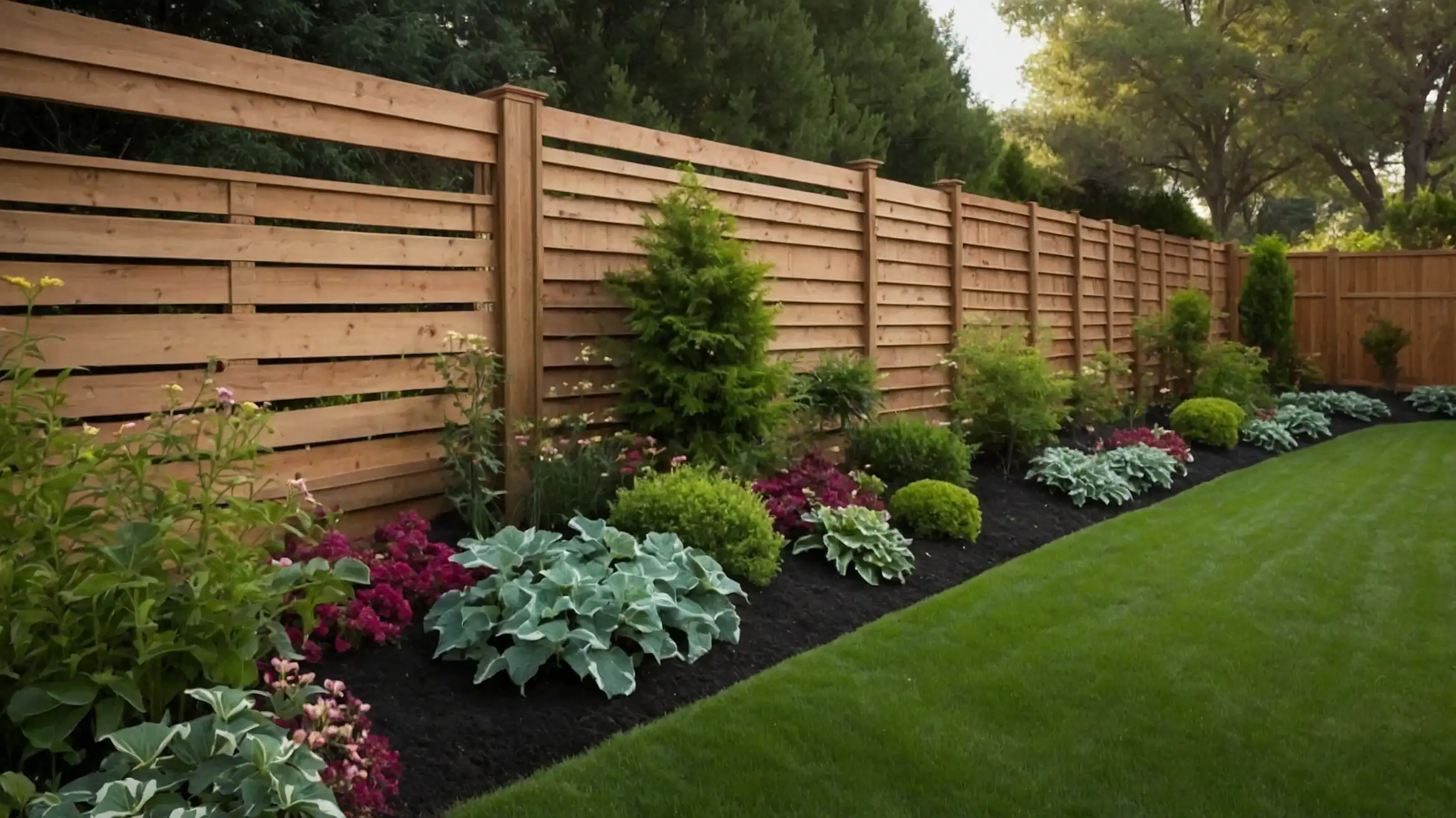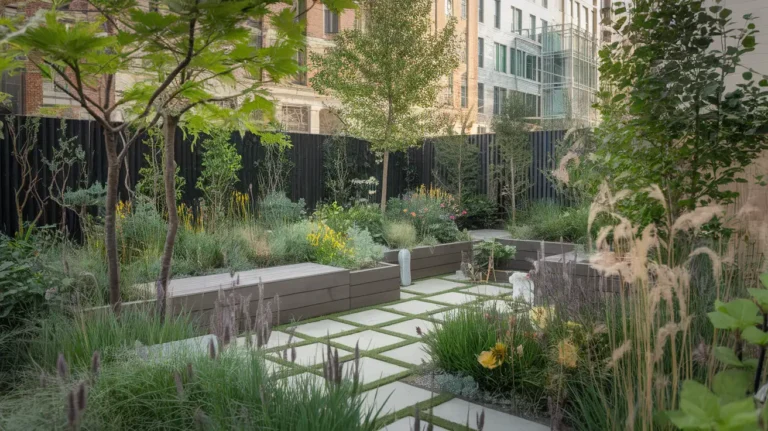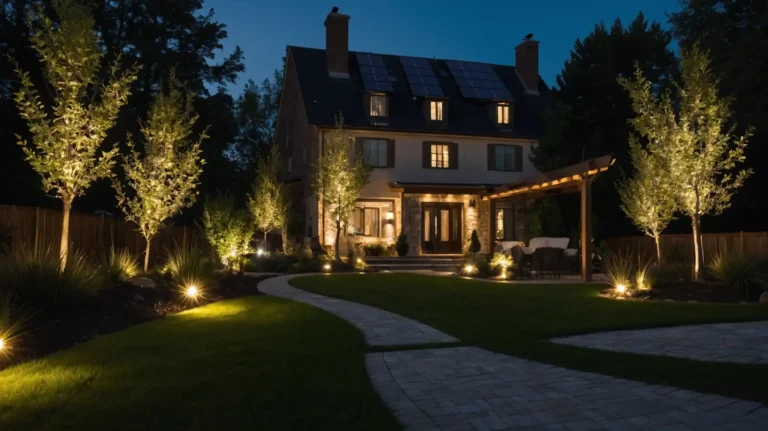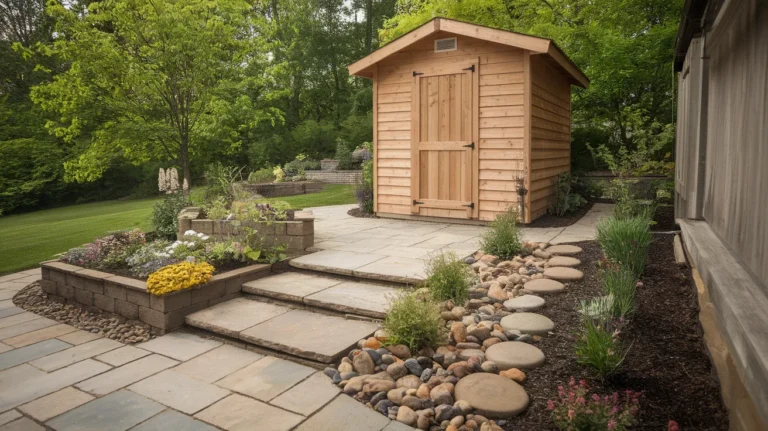27 Budget-Friendly Garden Fence Ideas to Transform Your Outdoor Space in 2025
Garden fences serve multiple purposes—they define boundaries, protect plants from wildlife, block unsightly views, and add personality to your outdoor space.
However, traditional fencing options can quickly drain your landscaping budget.
Fortunately, you don’t need to spend a fortune to create an effective and attractive garden barrier.
Creative alternatives and clever DIY approaches can dramatically reduce costs while adding unique character to your yard.
These affordable fencing ideas will help you establish beautiful boundaries without breaking the bank.
From repurposed materials to strategic plantings, you’ll find options suited to every style and skill level.
1: Pallet Wood Transformation

Convert free wooden pallets into charming fence sections by disassembling and reassembling the boards into custom panels.
This recycled option costs little more than your time and basic hardware.
Sand rough edges and apply a protective finish to extend longevity.
The weathered wood creates a rustic aesthetic perfect for cottage and farmhouse garden styles.
2: Living Willow Fence

Weave flexible willow branches between vertical supports to create a living fence that grows stronger each year.
Plant willow rods directly into moist soil where they’ll root and flourish.
Train new growth by weaving it back into your structure.
This sustainable approach combines boundary marking with artistic garden architecture that changes with the seasons.
3: Bamboo Roll Screening

Purchase inexpensive bamboo roll fencing and attach it to simple wooden posts for an instant tropical or zen-inspired boundary.
This lightweight option installs quickly with minimal tools.
The natural material weathers to a silver-gray over time or maintains its warm tone with occasional oil treatments.
Bamboo creates effective privacy while allowing gentle breezes to filter through.
4: Wire Grid with Climbing Plants

Install basic wire mesh or cattle panels as an affordable framework, then train climbing plants to create a living green wall.
This technique combines structure with beautiful foliage.
Choose fast-growing vines like morning glory for seasonal coverage or evergreen climbers like ivy for year-round screening.
The metal framework disappears behind lush greenery as plants mature.
5: Woven Branch Hurdles

Weave flexible branches between upright wooden stakes to create traditional hurdle panels.
This ancient technique uses free materials from your own tree and shrub prunings.
Hazel, willow, and dogwood branches work particularly well due to their flexibility.
The resulting wattle panels create a charming, rustic boundary with natural woodland character.
6: Corrugated Metal Sections

Repurpose corrugated metal roofing panels as modern industrial-style fencing.
Mount these lightweight, affordable sheets to simple wooden frames for a contemporary look.
Allow the metal to develop a natural patina or paint it for a more polished appearance.
The ridged texture adds visual interest while the metal reflects light in interesting ways.
7: Fabric Privacy Screens

Create temporary or seasonal boundaries using outdoor fabric attached to a simple post system.
Weather-resistant canvas or shade cloth offers affordable privacy with minimal construction.
Choose colors that complement your garden palette or outdoor furnishings.
This flexible option allows for easy reconfiguration and winter storage in harsh climates.
8: Mixed Recycled Material Fence

Combine various reclaimed materials like old doors, windows, shutters, and lumber into an eclectic boundary with artistic flair.
This patchwork approach turns discarded items into garden features.
Unify disparate elements with consistent paint colors or finishing techniques.
This sustainable approach keeps materials out of landfills while creating a one-of-a-kind garden backdrop.
9: Stone Gabion Sections

Fill wire cages with collected stones, broken concrete, or brick rubble to create solid, durable fence sections without masonry skills.
These permeable structures allow airflow while blocking views.
Combine with wooden panels or plantings for a mixed-material boundary.
Gabions offer excellent sound dampening and can help block wind in exposed garden sites.
10: Rope and Pole Design

String nautical or hemp rope horizontally between wooden posts for a simple, beach-inspired boundary.
Add multiple rows of rope for increased definition without blocking views or breezes.
This minimalist approach works particularly well for casual garden styles and coastal landscapes.
The natural materials weather beautifully and can be easily replaced when needed.
11: Woven Plastic Strips

Thread colorful plastic strips through chain link fencing to transform utilitarian metal into a decorative barrier.
Use irrigation tubing, recycled plastic strips, or fabric ribbons for this affordable upgrade.
Create patterns and designs with contrasting colors for playful garden areas.
This technique provides instant privacy while disguising existing chain link structures.
12: Concrete Block Planter Wall

Stack concrete blocks in a staggered pattern, leaving openings for soil and plants.
Fill these cavities with colorful annuals or cascading perennials to soften the industrial appearance.
This dual-purpose structure serves as both boundary and vertical garden.
The thermal mass of concrete blocks also helps moderate soil temperatures for more consistent plant growth.
13: Picket Fence Alternative

Space wooden pickets farther apart than traditional installations to reduce material costs while maintaining the classic aesthetic.
This approach uses 30-50% less lumber while preserving visual impact.
Paint white for a traditional cottage look or try modern color schemes for updated appeal.
The wider spacing allows more visibility while still defining garden zones effectively.
14: Lattice Panel Sections

Install inexpensive wooden lattice panels between simple posts for a classic garden look that provides partial screening and support for climbing plants.
This widely available material creates instant structure.
Choose pressure-treated or cedar lattice for longevity without maintenance.
The open pattern creates dappled shade and visual separation without blocking air circulation.
15: Painted Tire Stack

Clean and paint used tires in bright colors, then stack them to create whimsical garden dividers.
This environmentally friendly option repurposes waste materials into functional garden features.
Fill the center space with soil to grow plants inside and between the tires.
This approach works particularly well for casual garden styles and children’s play areas.
16: Woven Willow Panels

Purchase ready-made willow hurdles or woven panels for an affordable natural screen with artisanal quality.
These traditional barriers blend beautifully with country gardens and natural landscapes.
The tight weave provides substantial privacy while the natural materials harmonize with plantings.
Willow panels develop a silver-gray patina as they weather in the elements.
17: Burlap Sack Screening

Attach coffee sacks or feed bags to a simple wooden framework for an industrial-rustic barrier with agricultural charm.
This textile approach offers texture and partial screening.
Treat natural burlap with weatherproofing spray to extend its outdoor life.
The earth tones and textural quality create a perfect backdrop for lush green plantings.
18: Log Stack Boundary

Stack firewood or fallen tree rounds between vertical posts to create a rustic fence with natural charm.
This technique transforms ordinary woodpiles into architectural features.
The irregular textures and varied colors add organic interest to garden boundaries.
As you use the firewood, you can refill spaces with fresh logs for a continuously evolving fence.
19: Painted Pallet Mural Fence

Stand pallets vertically side-by-side, then paint cohesive murals or patterns across their surfaces to create artistic garden dividers.
This approach combines boundary marking with outdoor art.
Choose colors that complement your garden plants and outdoor furniture.
The large surface area provides an opportunity for creative expression in your landscape design.
20: Bamboo Pole Fence

Bundle inexpensive bamboo poles vertically and bind them together with wire or decorative rope for an Asian-inspired garden screen.
This technique creates effective privacy with minimal materials.
Vary the heights for a more organic, natural appearance.
The vertical lines add rhythm to the landscape while the natural material complements most garden styles.
21: Succulent Living Wall

Attach landscape fabric to a simple wooden frame, add soil pockets, and plant drought-tolerant succulents to create a living fence that needs minimal irrigation.
This low-maintenance option combines boundary with beauty.
Choose varieties with complementary colors and textures for visual interest.
The fleshy plants create an ever-changing mosaic as they grow and multiply.
22: Recycled Window Frame Fence

Connect salvaged window frames to create a transparent boundary with architectural character.
Replace glass with chicken wire for safety or leave some panes intact for interesting light reflections.
Paint frames in coordinating colors to unify the installation.
This whimsical approach adds vintage charm while allowing views and light to filter through.
23: Salvaged Door Display

Install reclaimed doors side-by-side to create an eclectic boundary with architectural interest.
The varied designs and hardware create a gallery-like display in your garden setting.
Leave some doors partially open and plant behind them for a peek-a-boo effect.
This conversation-starting fence combines privacy with artistic expression.
24: Tension Wire Plant Support

Install horizontal wires between sturdy posts to create a minimalist framework for espalier trees or climbing plants.
This nearly invisible structure disappears behind foliage as plants mature.
Choose fruit trees for productive boundaries or flowering vines for seasonal displays.
This approach combines boundary marking with food production or ornamental growing.
25: Painted Concrete Block Wall

Stack standard concrete blocks and paint them in vibrant colors or patterns to transform utilitarian materials into decorative garden features.
This durable option requires minimal construction skills.
Create color gradients, geometric patterns, or freeform designs for personalized style.
The solid structure provides excellent wind protection and sound reduction between properties.
26: Wooden Crate Modules

Stack and secure wooden produce crates to form modular fence sections with built-in planting pockets.
This approach combines boundary marking with vertical growing space.
Plant herbs or flowers in the open sections for a productive barrier.
The uniform size of crates creates a rhythmic pattern that adds architectural interest to your garden.
27: Repurposed Shutter Fence

Mount old window shutters side-by-side to create a textural boundary with adjustable privacy.
This clever reuse gives new life to architectural salvage that might otherwise be discarded.
Leave shutters their original colors for an eclectic look or paint them uniformly for a more cohesive appearance.
The louvered design allows you to control visibility and airflow.
Conclusion
Garden boundaries don’t require significant investment to make a big impact.
Choose materials that complement your garden style and match your DIY comfort level for a fence that’s both affordable and beautiful.







